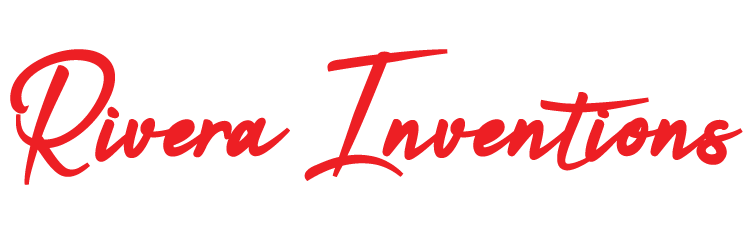Popcorn is often considered a quintessential American snack, frequently enjoyed in movie theaters or at casual gatherings. Its puffy, crunchy texture makes it a favorite for many. However, the origins of popcorn trace back far beyond modern times, spanning ancient civilizations. This article explores the historical roots of popcorn, seeking to uncover which civilization can lay claim to its invention.
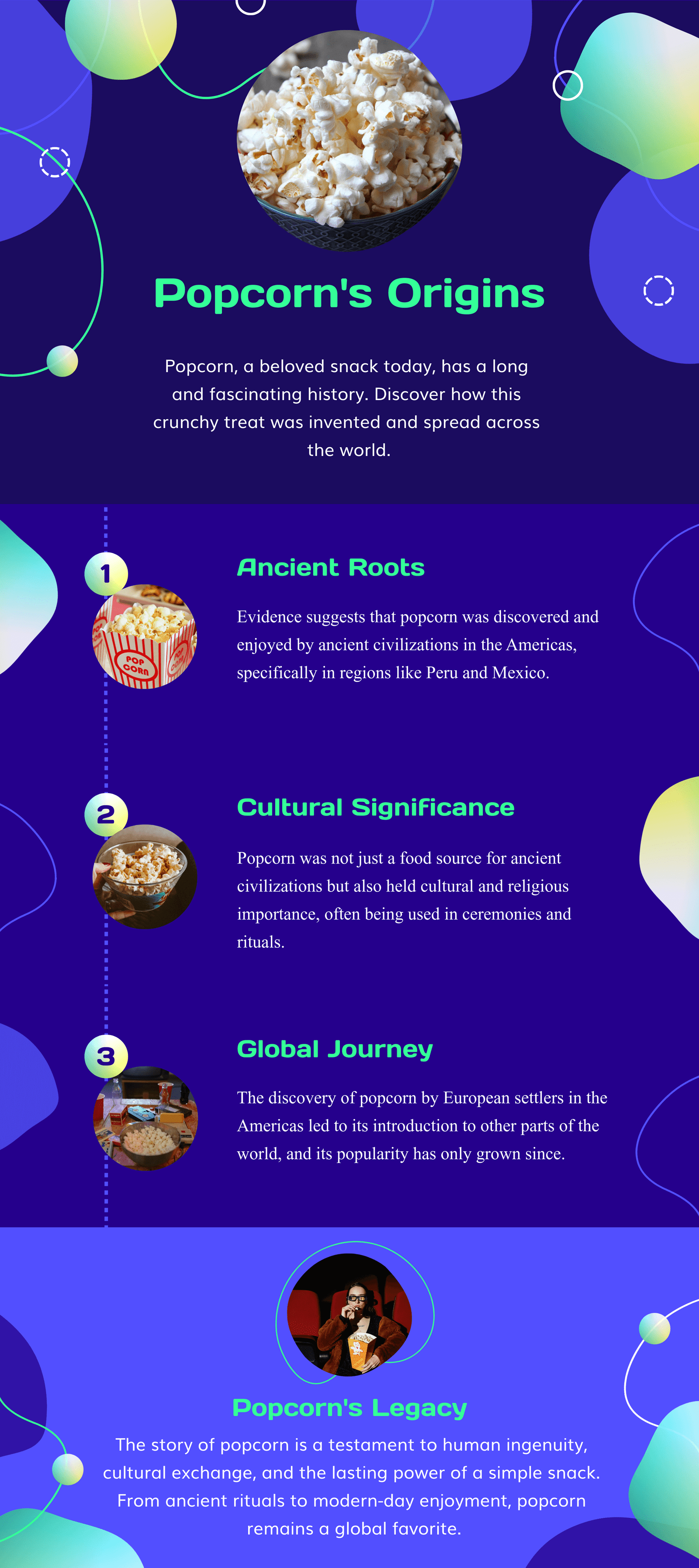
The allure of popcorn extends beyond its appeal as a simple snack. Its history is a testament to human ingenuity and cultural practices spanning thousands of years. Though it might seem like a modern indulgence, popcorn has been part of human culture for millennia. This article aims to delve into the popcorn invention origin, exploring how this ancient snack was developed and enjoyed by early civilizations.
The Early History Of Popcorn
Popcorn’s early history is deeply intertwined with the cultivation of maize, a crop that was essential to many ancient societies. Evidence suggests that popcorn’s origins are as old as the domestication of maize itself, which is believed to have occurred around 9,000 years ago in what is now Mexico. The people of these early civilizations, such as the Olmecs and Zapotecs, began experimenting with different varieties of maize, likely stumbling upon the unique properties of the popcorn kernel. Unlike other types of corn, popcorn has a distinctive structure.
Its hard outer shell, known as the pericarp, encloses a dense starchy interior. When heated, the moisture inside the kernel turns to steam, building up pressure until the kernel explosively pops. This natural phenomenon was probably discovered accidentally, possibly when kernels were thrown into a fire or placed near a heat source. This serendipitous discovery led to popcorn becoming an early food source, appreciated not only for its taste and texture but also for its novelty and simplicity. Over time, popcorn spread through trade and cultural exchange, becoming a valued part of the diet and rituals of various ancient American societies.
What Is Popcorn?
Popcorn is a special type of maize that pops when heated. Unlike other types of corn, popcorn kernels have a hard outer shell that traps steam until the pressure causes the kernel to burst. This process results in the fluffy, edible part of the popcorn we enjoy today. The unique properties of popcorn make it distinct from other corn varieties, which do not pop in the same way.
The Role Of Maize In Ancient Civilizations
Maize, also known as corn, was a vital crop for many ancient civilizations in the Americas. It served not only as a staple food but also as a central element in various cultural practices and rituals. Ancient peoples relied on maize for its versatility and nutritional value, incorporating it into their daily diets and ceremonial activities.
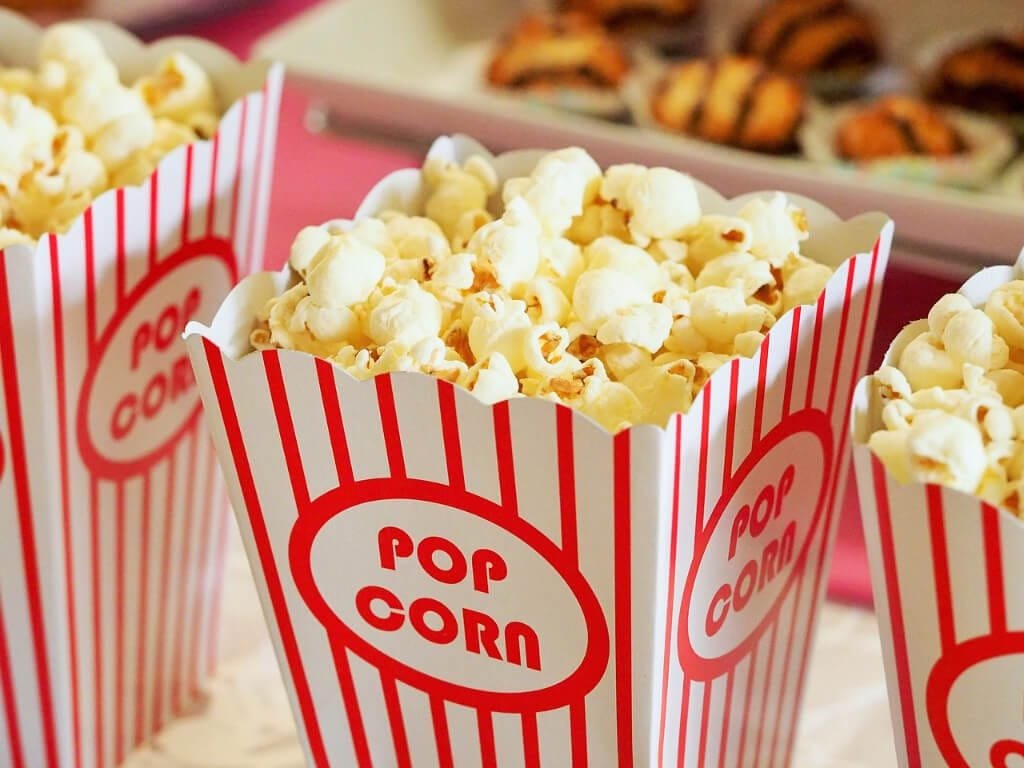
Archaeological Evidence Of Early Popcorn Use
Archaeological findings have provided compelling evidence that the use of popcorn dates back thousands of years, showcasing its deep-rooted presence in ancient cultures. One significant discovery comes from ancient burial grounds in Peru, where preserved popcorn kernels, cobs, and even popped corn were found, estimated to be around 6,700 years old. These findings suggest that the people of the region not only grew maize but also had the knowledge to select and use specific varieties suited for popping.
Another notable discovery was made in the Bat Cave of New Mexico, where archaeologists unearthed popcorn cobs believed to be around 5,600 years old. These cobs were smaller and more primitive compared to modern popcorn, yet they exhibited the same popping qualities. Additionally, pottery from ancient civilizations often features images depicting corn plants, some of which appear to show maize with popped kernels, indicating that popcorn had both practical and symbolic significance. These artifacts highlight that popcorn was more than just a food item. It was integrated into daily life and even ceremonial practices, providing insights into the agricultural and cultural sophistication of ancient American societies.
Discoveries In Peru
One of the earliest known uses of popcorn dates back approximately 6,700 years in Peru. Archaeologists have uncovered popcorn remnants in ancient Peruvian sites, indicating that the people of this region were among the first to enjoy this snack. The discovery of popcorn cobs and kernels in Peru highlights the long history of maize cultivation and the early use of popcorn.
The Cave Of The Popcorn (Pueblitos, New Mexico)
Archaeologists discovered popcorn remains in the Bat Cave of New Mexico, estimated to be around 5,600 years old. These findings include popcorn cobs and kernels, providing evidence that early inhabitants of the region consumed popcorn. The discovery in this cave further supports the idea that popcorn was enjoyed by ancient peoples well before the modern era.
Central And South American Findings
Other archaeological sites across Mexico and South America have also revealed popcorn remnants. These findings include pottery artifacts depicting maize popping and suggest that making and consuming popcorn was widespread across various regions. The consistent evidence across different sites points to a rich history of popcorn consumption in ancient Central and South American cultures.
The Civilizations Most Likely To Have Invented Popcorn
Several ancient civilizations can be credited with the early invention and use of popcorn, each contributing to the spread and development of this unique food. The Aztecs, for instance, are known to have utilized popcorn not only as a staple food item but also in their religious rituals and cultural practices. Spanish conquistadors documented seeing Aztec people use popcorn as decoration for ceremonial headdresses, necklaces, and ornaments dedicated to the gods, showcasing its significance beyond mere sustenance. Similarly, the Inca civilization, which thrived in the Andean region, embraced popcorn as part of their diet and rituals.
Evidence suggests that the Incas used popcorn in religious offerings, indicating its role in connecting with the divine. Meanwhile, the Maya civilization also had a history of popcorn use. The Maya cultivated various types of maize, including those specifically for popping and integrated popcorn into their feasts and celebrations. Popcorn kernels have been found in Mayan archaeological sites, often alongside other ceremonial items, hinting at its broader cultural and symbolic importance. These discoveries suggest that the invention of popcorn was not limited to a single civilization but rather emerged independently across several Mesoamerican cultures, each recognizing and valuing its unique properties and uses.
The Aztecs
The Aztec civilization, one of the most advanced and influential cultures in Mesoamerica, is known to have used popcorn. Spanish colonizers observed Aztec rituals that included popcorn, often used for ceremonial and decorative purposes. Popcorn was not just a food item but also held symbolic meaning in Aztec culture, contributing to their elaborate religious ceremonies.
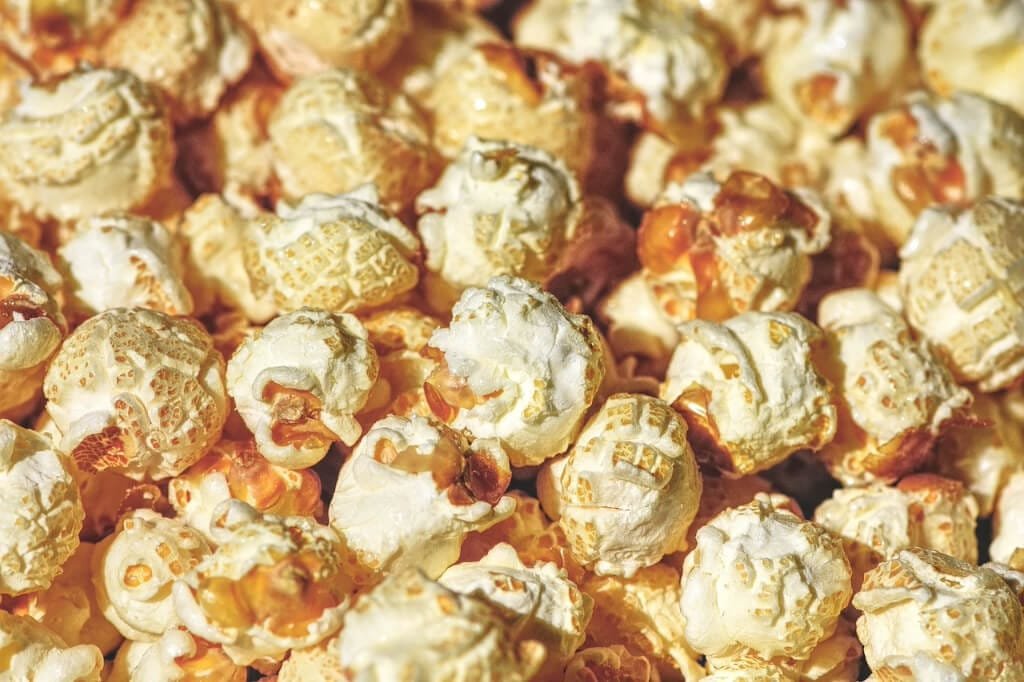
The Incas
Similarly, the Inca civilization, which flourished in the Andean region, incorporated maize and popcorn into their culture. The Incas valued maize highly, using it in both daily life and religious practices. Historical texts and archaeological evidence suggest that popcorn was a part of their diet and ceremonial traditions, indicating its significance in Incan society.
The Ancient Maya
The Maya civilization, known for its advanced writing system and architectural achievements, also consumed popcorn. Evidence from archaeological sites and ancient artwork reveals that the Maya included popcorn in their diet and used it in various ceremonial contexts. This further illustrates the widespread use of popcorn among different ancient cultures.
Cultural Significance Of Popcorn In Ancient Societies
Popcorn held considerable cultural significance in many ancient societies, transcending its role as a mere food item to become a symbol in religious and ceremonial contexts. For the Aztecs, popcorn was often associated with Tlaloc, the god of rain and fertility, and it played a vital role in their rituals aimed at ensuring bountiful harvests and favorable weather. During religious festivals, popcorn was used to create garlands and ornaments that adorned statues of deities, signifying purity and divine favor.
In Incan society, popcorn was not only a dietary staple but also featured prominently in offerings to the gods and rituals marking significant life events, such as births, marriages, and deaths. These practices underscored the belief in popcorn’s sacred nature and its connection to the spiritual world. For the Maya, the popping of maize kernels was a metaphor for fertility and renewal, concepts that were central to their agricultural calendar. Popcorn also appeared in Mayan artwork and iconography, symbolizing abundance and the cycle of life. The consistent presence of popcorn in these rituals and representations across various cultures highlights its integral role in the spiritual and social lives of ancient peoples, reinforcing its status as more than just a simple snack but as a bridge between the mundane and the divine.
Popcorn In Rituals And Religion
In many ancient cultures, popcorn was more than just a snack. It played a role in religious rituals and ceremonies. Maize, including popcorn, was often associated with deities and was used in rituals to honor gods or mark significant events. The cultural and spiritual importance of maize and popcorn highlights their integral role in ancient societies.
Popcorn was deeply woven into the fabric of religious and ceremonial life, symbolizing fertility, renewal, and the divine connection to the natural world. For the Aztecs, popcorn was more than just a food—it was a sacred element in rituals dedicated to Tlaloc, the god of rain, and Chicomecóatl, the goddess of agriculture. During these rituals, popcorn was often crafted into garlands and used as offerings to the gods, believed to ensure good harvests and favorable weather. Similarly, the Maya civilization viewed popcorn as a representation of fertility and life.
During key agricultural festivals, Maya priests would pop maize kernels, seeing the bursting kernels as a symbol of new life and abundance, mirroring the growth cycles of their crops. The Inca also integrated popcorn into their religious ceremonies, often presenting it alongside other offerings to appease their gods and ancestors, hoping to secure their favor for prosperous harvests. These rituals demonstrated the reverence ancient peoples had for maize and its by-products, highlighting popcorn’s symbolic role in maintaining the balance between humanity, agriculture, and the spiritual realm. Popcorn’s presence in these ceremonies not only underscores its importance in daily life but also its significance as a sacred object bridging the earthly and the divine. This sacred use of popcorn reflects how deeply interconnected food, spirituality, and community were in ancient civilizations, making it a powerful symbol of cultural identity and religious devotion.
Popcorn As A Food Source
Beyond its ceremonial use, popcorn served as a valuable food source. Ancient civilizations incorporated popcorn into their diets, appreciating its nutritional benefits and versatility. The methods of preparation and consumption varied, but popcorn consistently played a role in sustaining these early cultures.
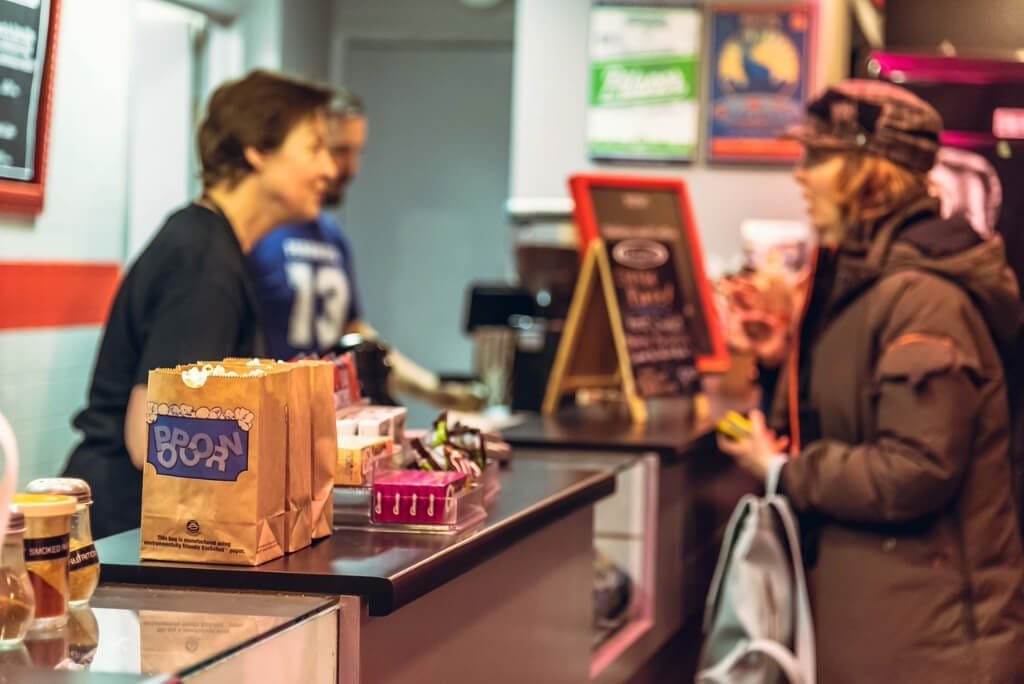
How Popcorn Spread Across The Globe
The spread of popcorn beyond its ancient origins in the Americas can be attributed to a combination of cultural exchange, trade, and technological advancements. When European explorers and settlers arrived in the New World, they encountered indigenous tribes who were already cultivating maize and making popcorn. Native Americans introduced popcorn to the early settlers, who were fascinated by this unique form of maize. Historical accounts describe Native Americans bringing popcorn to the first Thanksgiving feast, demonstrating its place in their culture. As trade routes expanded and knowledge of crops and cooking techniques spread, popcorn traveled back to Europe.
Although it did not initially gain widespread popularity there, the curiosity about this novel grain laid the groundwork for its global journey. It wasn’t until the late 19th and early 20th centuries, with the invention of the popcorn machine by Charles Cretors and the rise of cinema, that popcorn became a global phenomenon. The portability and affordability of popcorn made it a perfect snack for theaters, further boosting its popularity. Soon, popcorn was not only a staple in American households but also began to gain traction in markets worldwide. Today, from street vendors in Asia to gourmet popcorn shops in Europe, popcorn’s journey from ancient rituals to modern snack sensation illustrates its universal appeal and enduring legacy, rooted in its ancient popcorn invention origin.
Introduction To Popcorn In North America
When European settlers arrived in North America, they were introduced to popcorn by Native Americans. The indigenous peoples of the continent had long been enjoying popcorn, and they shared this knowledge with the settlers. This introduction marked the beginning of Popcorn’s journey into broader American culture.
The Modernization And Commercialization Of Popcorn
As time progressed, popcorn evolved from an ancient snack to a widely commercialized product. The invention of the popcorn machine revolutionized its production and consumption, making it a staple in movie theaters and at home. The commercialization of popcorn further solidified its place as a popular and enduring snack.
Tracing Popcorn’s Origins
Tracing the origins of popcorn reveals a fascinating journey that spans thousands of years, connecting the ancient practices of indigenous cultures to the global snack phenomenon it is today. The earliest evidence of popcorn points to the ancient peoples of the Americas, where maize was domesticated around 9,000 years ago. Archaeological finds, such as preserved popcorn kernels and cobs in places like Peru and Mexico, demonstrate that popcorn was a valued food item long before modern history. These early American civilizations not only cultivated maize for food but also developed specific techniques for popping kernels, showing their ingenuity and understanding of agricultural science.
As different cultures, including the Aztecs, Incas, and Maya, explored the potential of maize, they embraced popcorn for both its nutritional benefits and its role in religious and ceremonial practices. The process of popcorn making, once a novelty, became a symbol of cultural identity and spiritual connection, highlighting the rich tapestry of tradition surrounding this simple yet profound food. The story of popcorn’s invention origin is a testament to human creativity and adaptability, illustrating how ancient discoveries can evolve into beloved traditions that transcend time and geographical boundaries. As we enjoy popcorn today, we partake in a ritual that has united people across different eras and cultures, connecting us to a shared human history.
The Legacy Of Ancient Civilizations
The invention of popcorn is attributed to multiple ancient civilizations, including the Aztecs, Incas, and Maya. Each of these cultures contributed to the development and popularization of this unique snack. The shared legacy of these civilizations reflects the rich history of popcorn and its significance across different societies.
Popcorn’s Journey From Ancient Times To Modern Day
From its origins in ancient civilizations to its modern-day popularity, popcorn has maintained its appeal over thousands of years. Its transformation from a ceremonial food to a beloved snack underscores its enduring cultural significance.
Final Thoughts
Popcorn’s history is a fascinating journey through time, connecting ancient cultures with contemporary enjoyment. As you savor your next bowl of popcorn, consider its rich historical background and the ancient people who first discovered its delightful crunch.
FAQs
What Is The Origin Of Popcorn?
Popcorn’s origins date back thousands of years to ancient civilizations in the Americas. Archaeological evidence suggests that popcorn was enjoyed by the Aztecs, Incas, and Maya.
Which Civilization First Invented Popcorn?
While it is challenging to pinpoint a single civilization as the inventor of popcorn, evidence shows that the Aztecs, Incas, and Maya all consumed and valued popcorn. These civilizations likely independently developed the practice of popping maize.
How Was Popcorn Used In Ancient Cultures?
In ancient cultures, popcorn was used in both dietary and ceremonial contexts. It was often incorporated into religious rituals and festivals, and its nutritional value made it a significant food source.
When Did Popcorn Become Popular In Modern Times?
Popcorn gained widespread popularity in modern times with the invention of the popcorn machine, which made it easier to produce and sell. Its popularity soared in movie theaters and continues to be a favorite snack today.
Is There Any Historical Evidence Of Popcorn In Other Parts Of The World?
While the primary evidence of ancient popcorn use comes from the Americas, its history suggests that similar practices might have existed in other regions. However, concrete evidence of popcorn in ancient civilizations outside the Americas is limited.
Also Read: In Which Year Were Windows Invented?
